
Editor's Note: This story originally appeared on LawnStarter.
This is how to make a good homemade weed killer: Mix 1 cup of salt with 1 tablespoon of liquid soap and 1 gallon of vinegar. Or, at least, that is one of the most popular DIY herbicide recipes for stubborn weeds.
But that is not the only recipe for homemade weed killer!
Some alternatives are even simpler to prepare and healthier for the soil. If pesky weeds are claiming your yard, keep reading this article.
You’ll find helpful DIY herbicide recipes, details about ingredients, how to prepare each solution, how to use it, and some important safety warnings.
How To Make Homemade Weed Killer
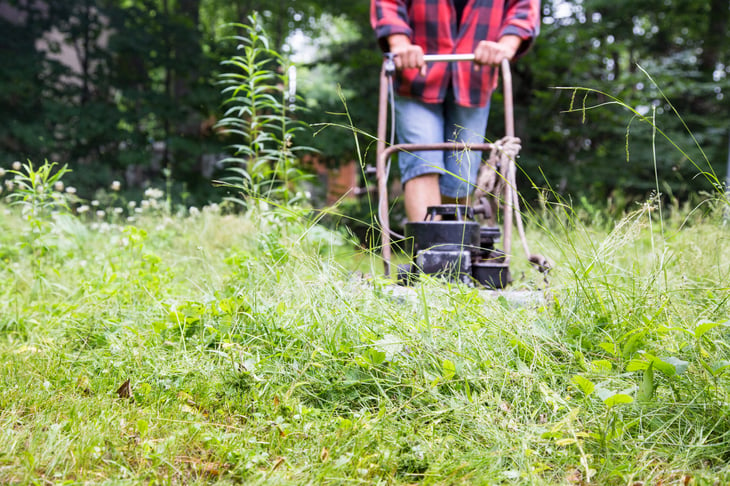
To prepare a homemade weed killer, you need the following:
- Ingredients that actively damage plants, such as vinegar, lemon juice, salt, baking soda, rubbing alcohol, etc.
- Water to ensure absorption when you’re using a powder like salt or baking soda and, in some cases, to dilute the solution.
- A surfactant like liquid dish soap.
Weed leaves have a protective waxy layer that gathers sprayed liquids in well-defined droplets, reducing the contact surface.
Surfactants lower surface tension, and the herbicide droplets spread wider across the weed, better covering the surface and killing more of the plant.
The most popular product used as a surfactant is a dishwashing liquid such as Dawn, Palmolive, or Joy soaps. Alcohols also have similar properties. Keep in mind that dish soaps are not organic. Castile soap may be used as a natural alternative.
DIY Weed Killer Ingredients and How They Work
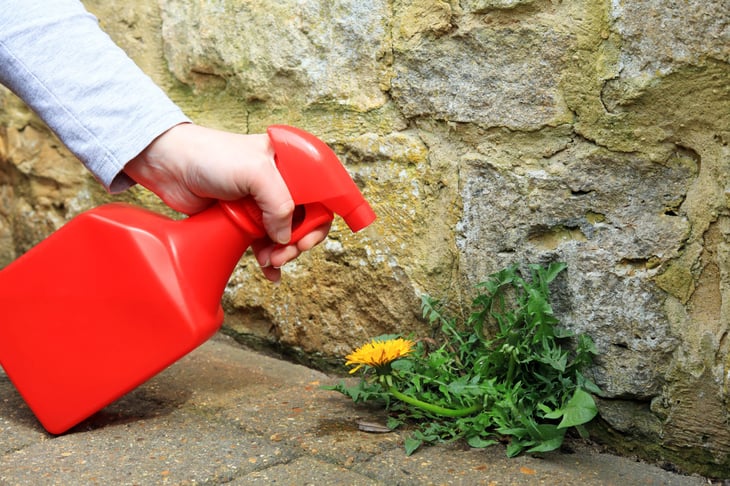
Active ingredients used in homemade weed killers act as contact herbicides, only damaging what they touch.
Since they only hurt top growth (leaves, stems) and not the root system, they work effectively on young annual weeds with small roots but are less effective on perennial weeds with extensive roots and vegetative systems.
The efficiency of contact herbicides is highly dependent on coverage. Broadleaf weeds are more vulnerable than grassy weeds because it’s easier to get good coverage on their large leaves.
Home remedy ingredients also make for non-selective killers, damaging everything they touch, friend and foe.
Here are the main active ingredients you can use in homemade herbicides.
Vinegar
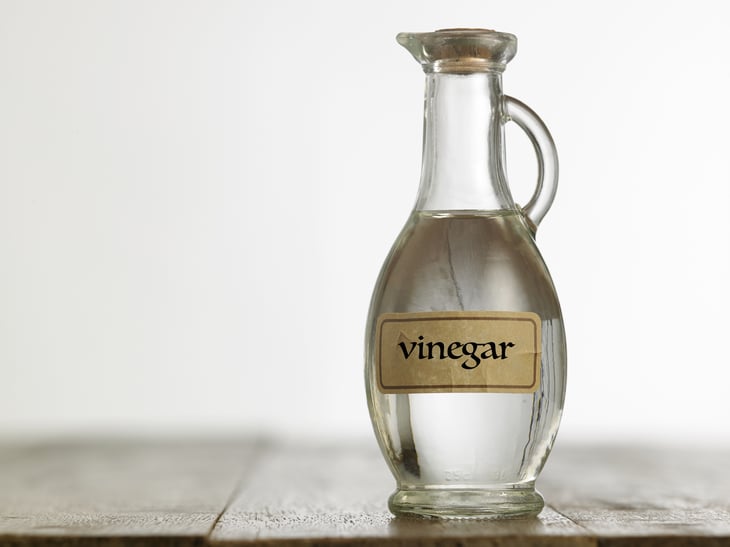
How does this weed killer work? The active ingredient in vinegar, acetic acid, “ruptures plants cells, causing fluids to leak and plant tissues to dry out,” says the University of Montana on vinegar’s effectiveness as a herbicide.
Treated plants go yellow, then brown, then wilt and die within a day.
Vinegar gets good results on broadleaf weeds, like dandelions, broadleaf plantain, or clover, where 10% to 20% acetic acid solution damages 90% of exposed plants. With grassy weeds, studies show a success rate of around 45% to 65%. But weeds resprout in about two months.
A study published by the Cornell Cooperative Extension shows that acetic acid can also damage perennial quackgrass and Kentucky bluegrass upon application.
Pro tip about using vinegar in DIY weed killer recipes: Look for horticultural vinegar with 20% to 30% acetic acid. Household vinegar has only 5% and is less powerful.
Environmental Effect and Safe Use of Vinegar
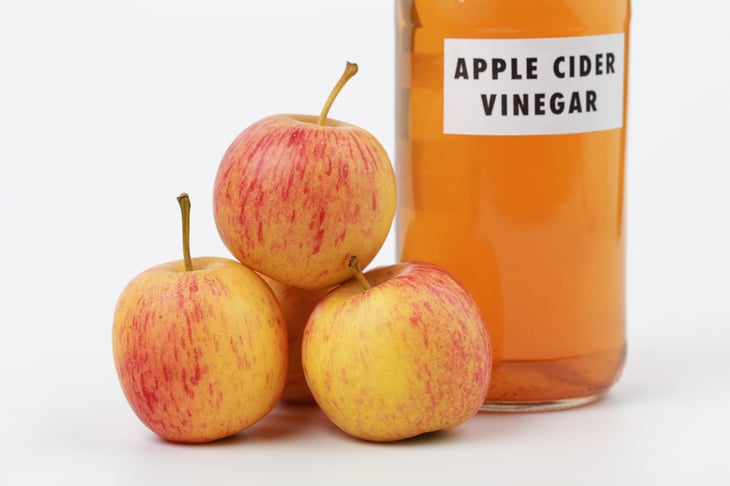
Acetic acid breaks down easily, so any soil damage is short-lived. To keep the soil healthy and prevent damage to nearby plants, don’t apply vinegar weed killer more often than once every two weeks.
Vinegar with over 11% acetic acid can burn skin and permanently damage corneal tissue if it gets in your eyes. Wear gloves, long sleeves, long pants, and protective glasses to apply the solution safely.
Acetic acid also damages metal, so avoid any metal fencing or garden furniture. Don’t use a sprayer with metal elements to spread it (metal nozzle, metal spray lines, etc.). It can also stain and harm masonry surfaces.
Lemon Juice
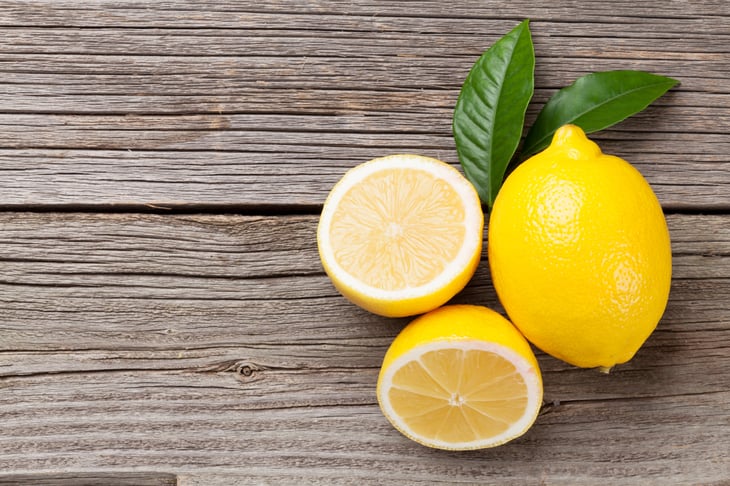
A natural weed killer, lemon juice has 5% to 8% citric acid, another desiccant that dries weeds from the inside out. You can spray lemon juice directly on the weeds, but mixing it with vinegar improves results.
Environmental Effect: Typically, lemon juice is safe for your soil, except when used in large quantities. In this case, it lowers soil pH.
Safe Use: Lemon juice can irritate your eyes. Wear goggles, and don’t spray when it’s windy. Bear in mind that citric acid can damage marble, granite, and metal surfaces.
Salt
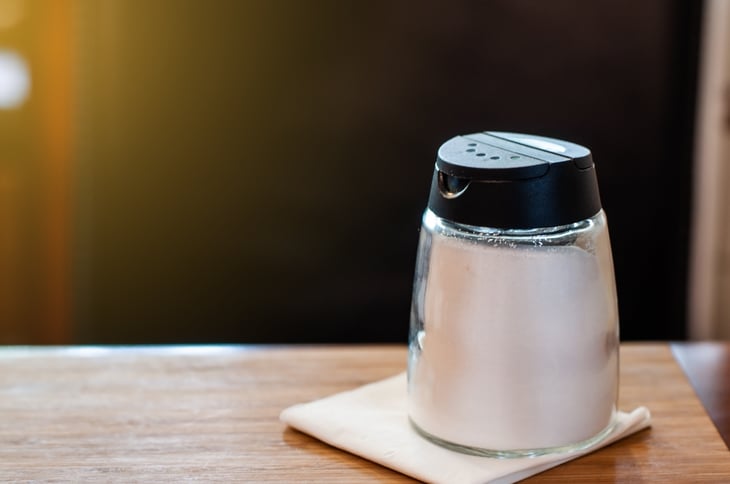
Where it touches the plant, salt extracts water from the cells, and weeds dry from the inside out.
It can also be absorbed through the roots if watered into the soil. In this case, salt disturbs the plant’s chemical processes, killing the entire weed. Used like this, salt damages the soil long-term, preventing any plant from developing.
Remember that we are talking about ordinary table salt, sea salt, or rock salt rich in sodium chloride. Don’t use Epsom salt. It’s magnesium chloride, and you need sodium ions to damage the weeds.
Environmental Effect and Safe Use of Salt
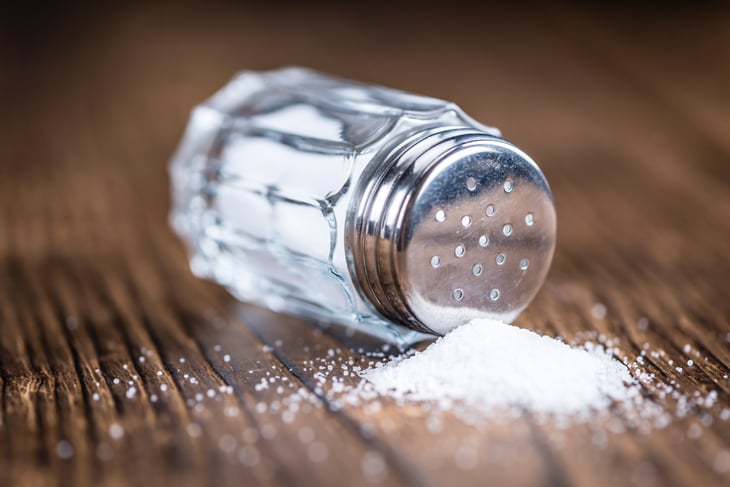
Warning! Excessive salt in the soil is toxic for all plants! Don’t overdo it.
Consider salt for spot-spray treatments only when you have a few young weeds to kill, so you’ll use a small amount in just a few applications. The best applications are on weeds in walkways, pathways, driveways, gravel paths, etc.
Applying a salt herbicide is not generally risky for humans or pets. On the other hand, salt can damage porous materials like brick, concrete, sandstone, cement-based coatings, and metal.
Dish Soap
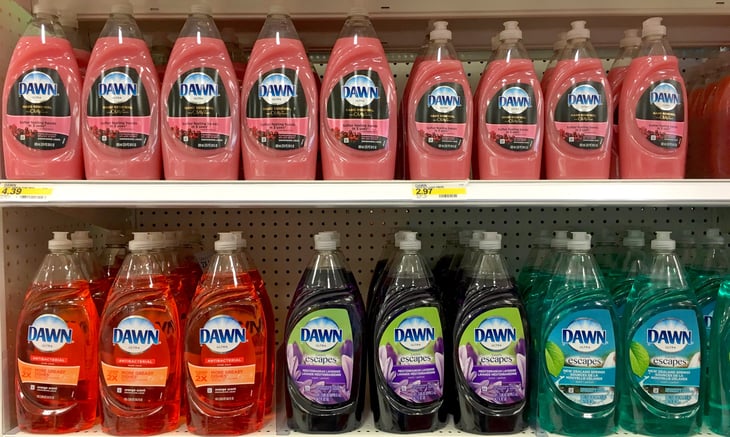
While we primarily use dish soap as a surfactant in weed-killer recipes to help the solution stay longer on leaves, it also has some herbicide power.
Dish soap breaks down oils and grease. When applied to leaves in a higher concentration, it destroys the protective waxy layer.
It makes leaves vulnerable to heat, dry air, diseases, and pests. Most soaps also contain perfumes, bleach, and other substances toxic to plants.
Most dishwasher soaps are not natural or organic, even though they’re included in many online lists of “natural” weed killers.
Environmental Effect: Liquid soap pollutes soil and water. Avoid using it in large amounts.
Safe Use: Dish soap can irritate your eyes. Spread with care and wear protective goggles.
Rubbing Alcohol
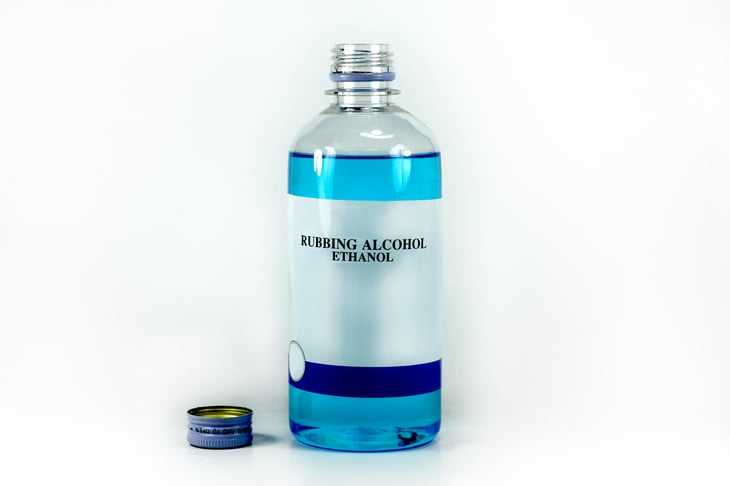
At 5% concentration, rubbing alcohol or isopropyl slows down plant growth. At over 50%, it damages leaves and stems by dissolving their waxy layer and causing plants to lose water.
Environmental Effect: Rubbing alcohol has a low tendency to sediment or bind to soil and is highly biodegradable. Still, large amounts of alcohol in the soil can destroy the microbiome and make the soil unsuitable for plants until it dissipates.
Safe Use: Rubbing alcohol is harmful to pets and children if ingested. Keep it in a safe place.
Wear a mask when applying, since it can cause irritation if inhaled. Alcohol can irritate the nose and throat. Prolonged skin contact can also lead to rashes and itchiness.
6 Easy Homemade Weed Killer Recipes
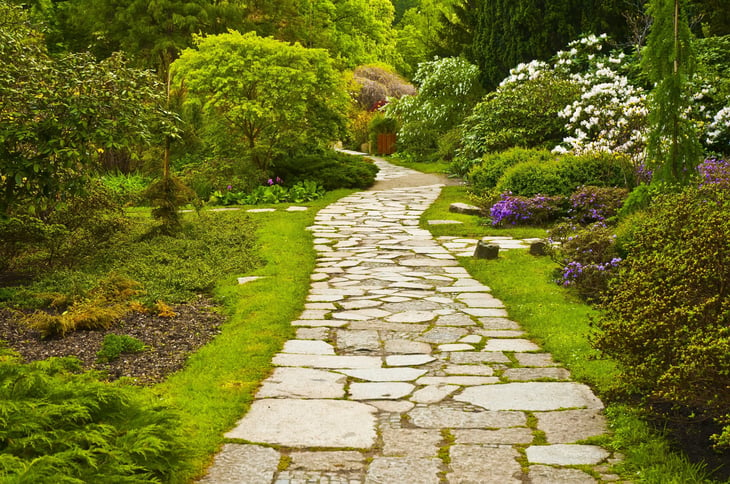
There are numerous homemade weed killer recipes available online, combining the ingredients we talked about in previously. Here are six homemade weed killer recipes you can use in your garden.
Vinegar Weed Killer Solution
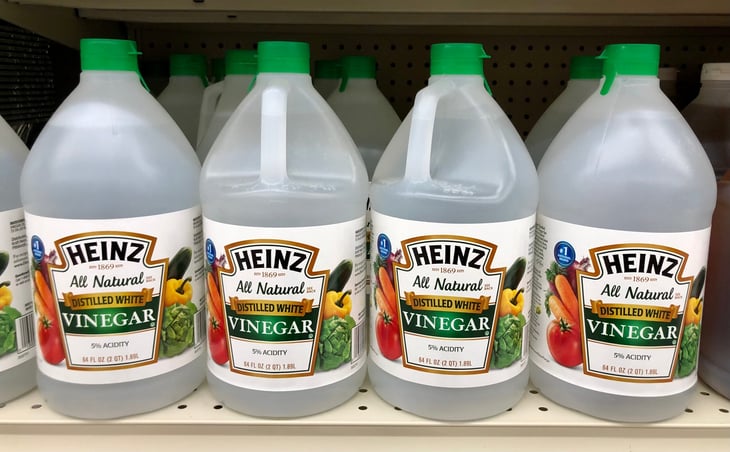
Make a vinegar solution by mixing 1 tablespoon of dish soap with 1 gallon of white vinegar (or apple cider vinegar) into a bucket or a canister. Stir thoroughly. Pour into a spray bottle and spot-spray the weeds in your garden.
Use horticultural vinegar, not kitchen vinegar, if the weeds have more than two leaves or you’re treating perennial weeds.
Vinegar, Lemon Juice, Rubbing Alcohol, and Soap
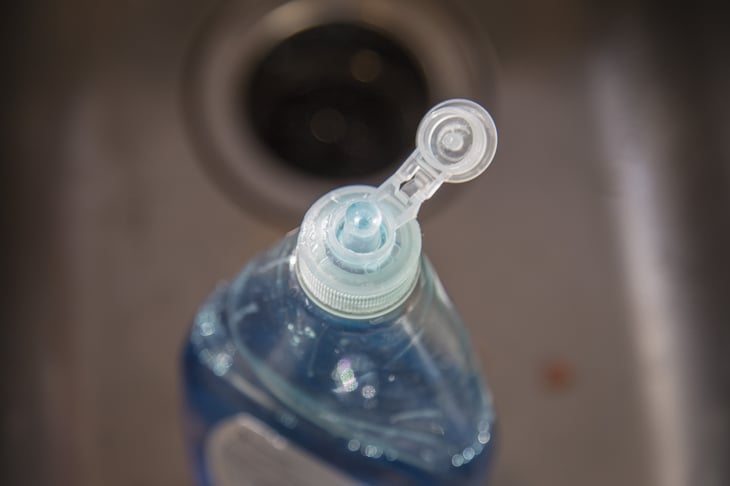
Add 3 tablespoons of lemon juice, 1 ounce of rubbing alcohol, and 2 tablespoons of liquid dish soap to 2 cups of vinegar in a spray bottle. Stir to homogenize, then spot-spray every weed.
Salt Solution
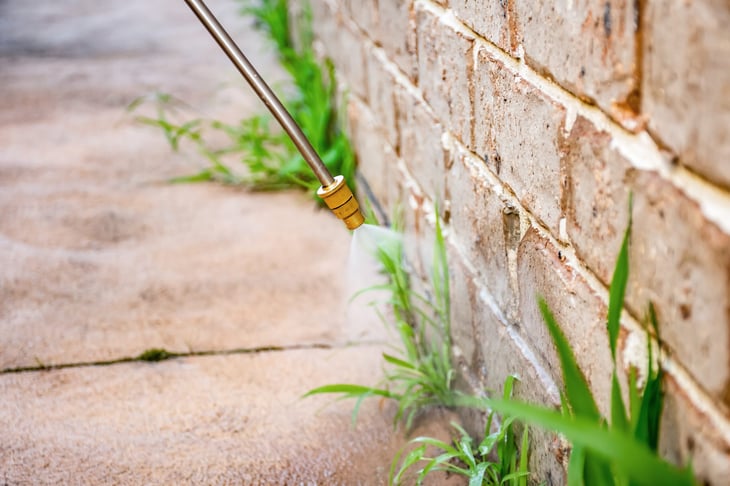
Dissolve 1 cup of table salt into 2 cups of water. Put the liquid into a garden sprayer. Spread directly on the weed leaves, avoiding your grass and other valuable plants in your yard.
Warning! Don’t overdo it! With salt, using too much and ending up with bare soil is easy. If you have perennials or stubborn annuals, try another mix without salt, or hand-pull the weeds and roots.
Rubbing Alcohol Solution
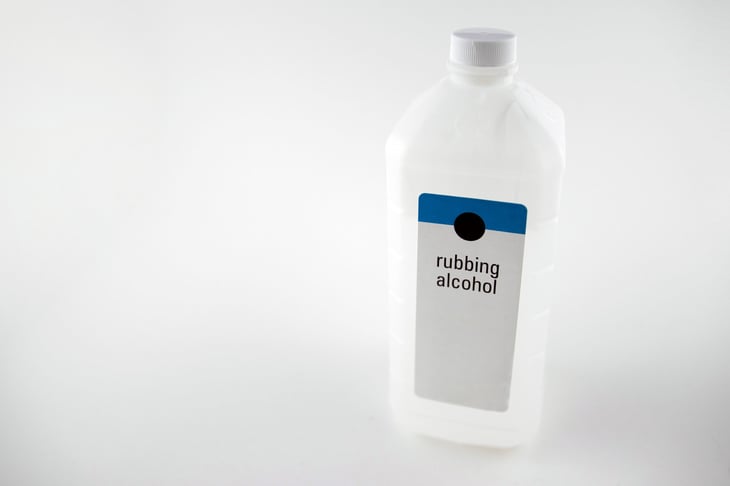
Mix 2 tablespoons of rubbing alcohol with 4 cups of water and fill a sprayer. Apply on weed leaves and stems, avoiding plants you want to keep and the soil surface.
Or, soak a cotton ball in alcohol and rub the weed leaves with it.
Warning! Don’t soak the soil with alcohol. Nothing will grow on it until you wash it off.
Boiling Water

Put water into a kettle and heat it until it boils. Pour directly on the weed. The high heat ruptures plant cells and kills the vegetal tissue.
Be careful not to get hot water on you. Wear long trousers and closed shoes (not sandals or slippers). Use an oven mitt if the handle is hot.
Note: While boiling water that gets into the soil can kill some microbiomes, it’s only a minor negative effect compared with salt and alcohol.
Soapy Water
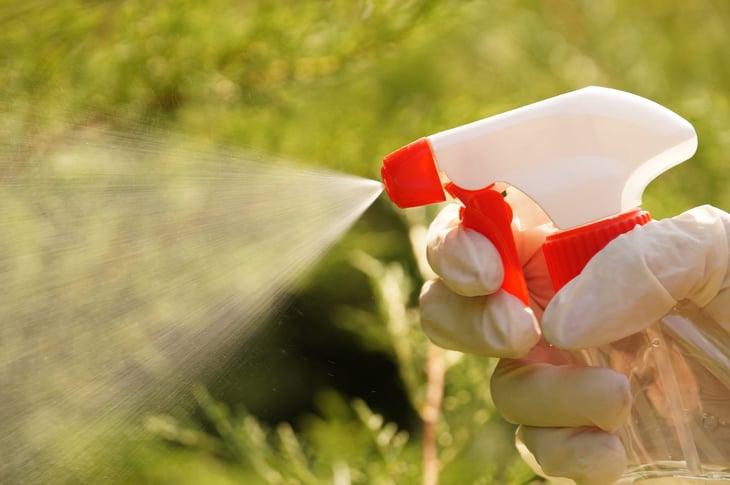
Add 1 cup of liquid dishwashing soap to 2 cups of water in a bucket. Fill a sprayer bottle and apply it on weed leaves, avoiding spills on the soil or plants you want to keep.
Warning! Remember, dish soap is a water and soil pollutant. Use this recipe with moderation.
How to Improve Results When Using DIY Weed Killers

Here are a few tips that give a boost to DIY weed killers and help you get better results:
- Spread homemade weed killer when weeds are sprouting and only have two, maximum four leaves.
- Apply on sunny days when temperatures are over 80-85 degrees and rain is not forecast for the next two to three days.
- Spray the weed surface generously and thoroughly, doing your best to treat all the leaves and growing buds.
- Add surfactants to homemade herbicide solutions. They help spread the solution better on leaves.
- Repeat application if you’re treating larger weeds.
Pros and Cons of Homemade Weed Killers
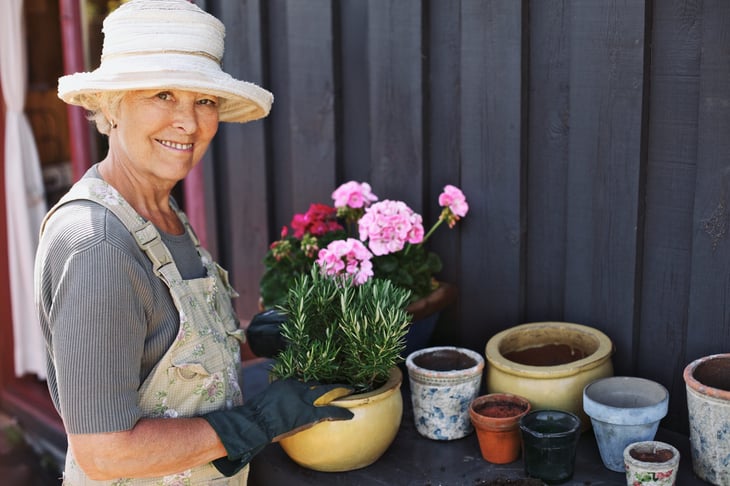
Despite their increasing popularity, it’s wise to approach homemade herbicides with a grain of salt. They don’t include the same harsh chemicals as most synthetic products, but some can still harm the soil if used extensively.
Also, homeowners often have unrealistic expectations about their effectiveness.
Before taking out the vinegar bottle or salt container from the pantry to prepare a DIY herbicide, consider both pros and cons of your idea.
Pros of Using Homemade Weed Killers

- Most are better for the soil than chemical herbicides
- Many use organic ingredients
- You probably already have most of the ingredients in your pantry
- Even if you don’t, these ingredients are a lot cheaper than commercial herbicides
Cons of Using Homemade Weed Killers
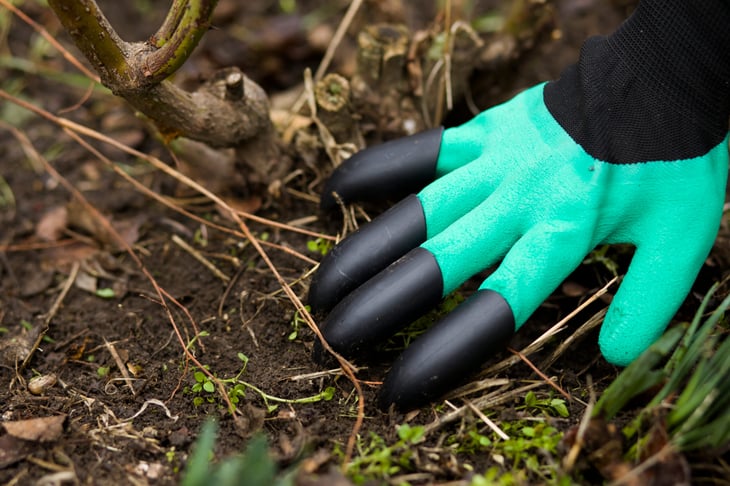
- They are short-term burnout products, not long-term solutions.
- These products work best with other weeding measures (hand pulling, keeping a dense and healthy lawn, etc.).
- There’s no selective DIY weed killer recipe so far.
- DIY weed killers are less effective on perennial weeds since they’re not systemic and damage only the top growth.
- More than a single application is required.
- It can cost more than commercial solutions for extensive applications.
- Some are toxic to the soil in large quantities.
If you weigh the pros and cons and decide you’d rather use commercial herbicides than try your luck with homemade recipes, check out our recommendations for the best weed killers you can buy (which include organic options safe for kids and pets).
Other Ways to Suppress Weeds
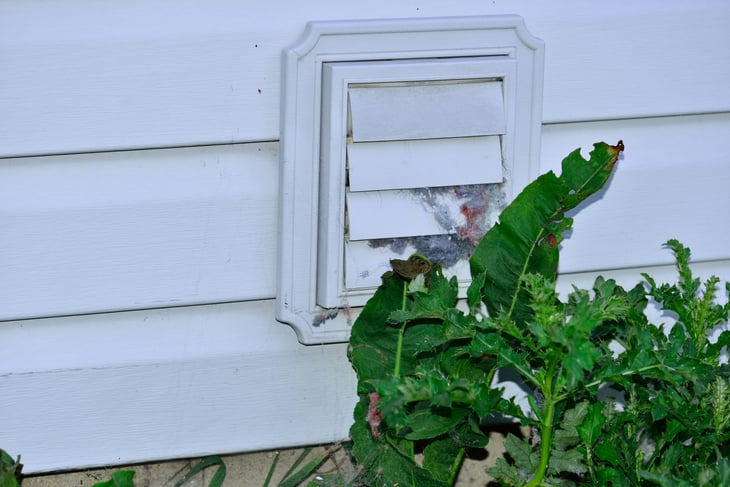
Weed control is a year-round activity. Applying a DIY herbicide to stop their momentum when the growing season starts is just a tiny part. For the best results, mix homemade weed killers with other weed management methods that:
- Prevent weeds from developing healthy leaves.
- Stop weed root development.
- Physically remove grown weeds.
- Prevent weed seeds from spreading from secondary areas.
How To Prevent Weeds From Developing Healthy Leaves

You can keep flower beds and vegetable plots free of garden weeds by using these weed control methods:
- Apply a layer of mulch, 2-3 inches thick. It stops sunlight from reaching the soil, and weed seedlings can’t develop.
- Plant a ground cover that is also a good companion for your flowers or vegetables. It leaves less space and nutrients for weeds.
- Install a layer of landscaping fabric to prevent weeds from emerging.
- Grow the plants denser if this doesn’t affect their health, development, and productivity.
How To Keep Weeds Out of Your Turfgrass
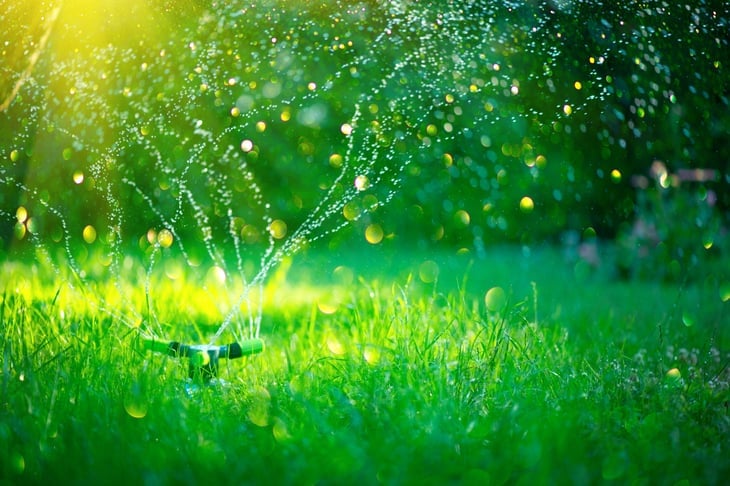
- Maintain healthy, thick grass that leaves no space for weed seeds to reach the soil or weeds to grow.
- Mow correctly, leaving the grass a little taller during the growing season.
- Irrigate deeply and less frequently to promote robust turfgrass, resilient to stress and diseases.
- Fertilize properly to prevent excess nutrients in the soil.
- Overseed in spring and fall if you notice thinning or bare spots.
Stop Weed Sprouts From Rooting With Corn Gluten Meal
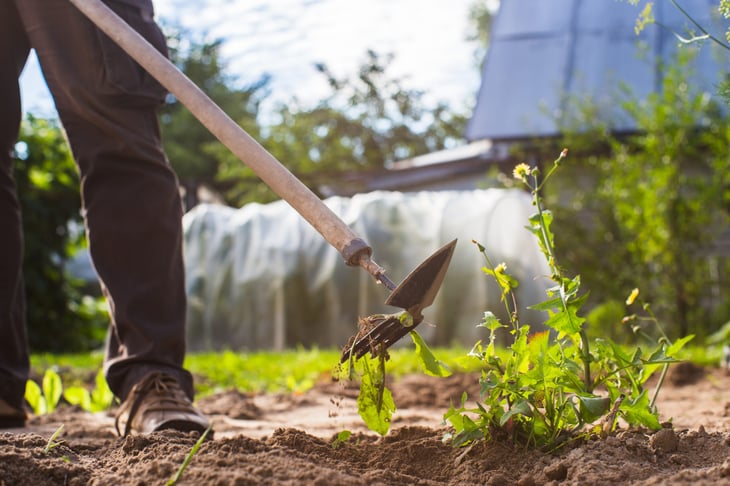
A residue of milling corn, corn gluten is often used as a fertilizer because it’s rich in nitrogen. It also works as an organic and environmentally safe herbicide when used at a specific time in the weeds’ life cycle.
The peptides present in corn gluten stop sprouts from developing roots. Corn gluten doesn’t prevent germination and is useless once the plant has formed roots. But applying it during the sprouting period can yield excellent results.
Corn gluten is a granular substance and requires watering to become active. But it will need a few dry days after that to successfully desiccate the young weeds’ forming roots.
Hand-Pull Weeds in Lawns, Flower Beds, and Vegetable Plots
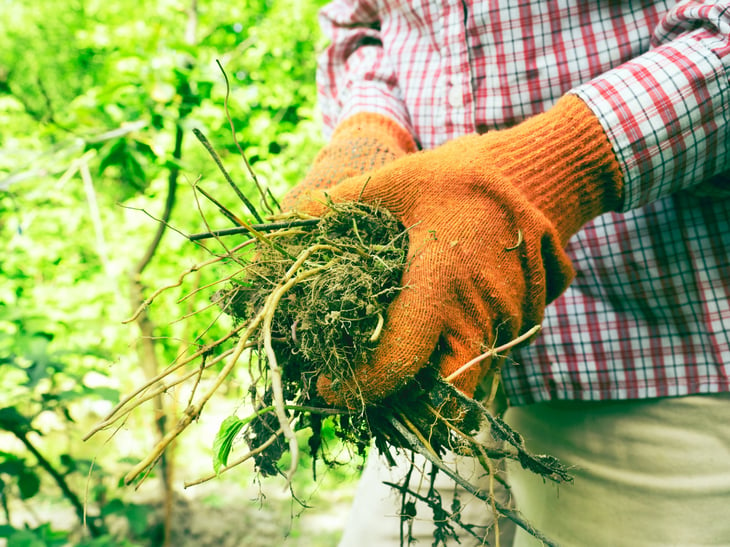
While weeds are still sparse in your garden, you can get rid of them by hand-pulling. It becomes more challenging when there is a large number of weeds.
The perfect moment to remove weeds by hand or with a hand weeder is after a good rain. If it’s a dry period, irrigate thoroughly the night before to loosen the soil. Roots will come out easier.
Pro tip about hand-pulling weeds: Know your weeds. This is a good method to attack perennials like crabgrass and Kentucky bluegrass. Use a screwdriver or a hand weeder to dig around perennials. Look for more roots, rhizomes, and tubers they might use to resprout.
Burn the Weeds on Walkways and Driveways
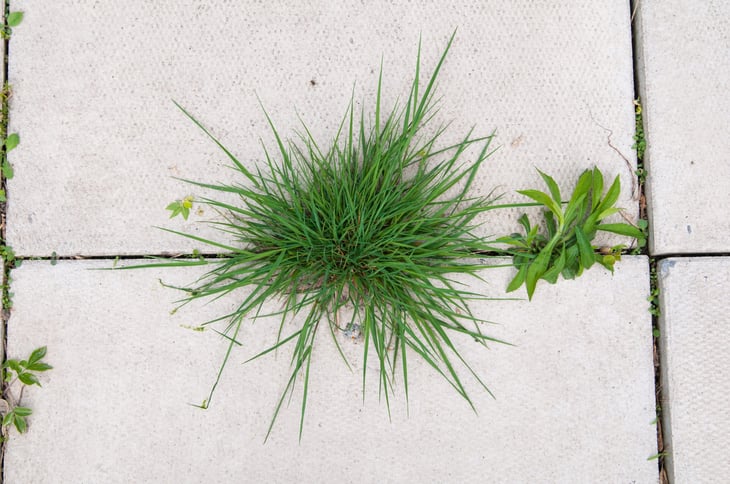
Mainly a wand connected with a propane container, a propane torch can be used to remove weeds with fire. It’s excellent for eliminating weeds in pavement cracks, gravel surfaces, and patios.
Avoid using it in flower beds or lawns. You risk damaging flowers and grass.
There’s no need to get the flame on every leaf. Only the high heat is enough to damage the plant. You can buy such a tool at your local garden shop or home improvement store or online.
Warning! Always practice fire safety when using a propane torch. Turn the flame on only for a moment, just long enough to burn the weed. Do not use a propane torch near lots of vegetation or during a drought.






Add a Comment
Our Policy: We welcome relevant and respectful comments in order to foster healthy and informative discussions. All other comments may be removed. Comments with links are automatically held for moderation.